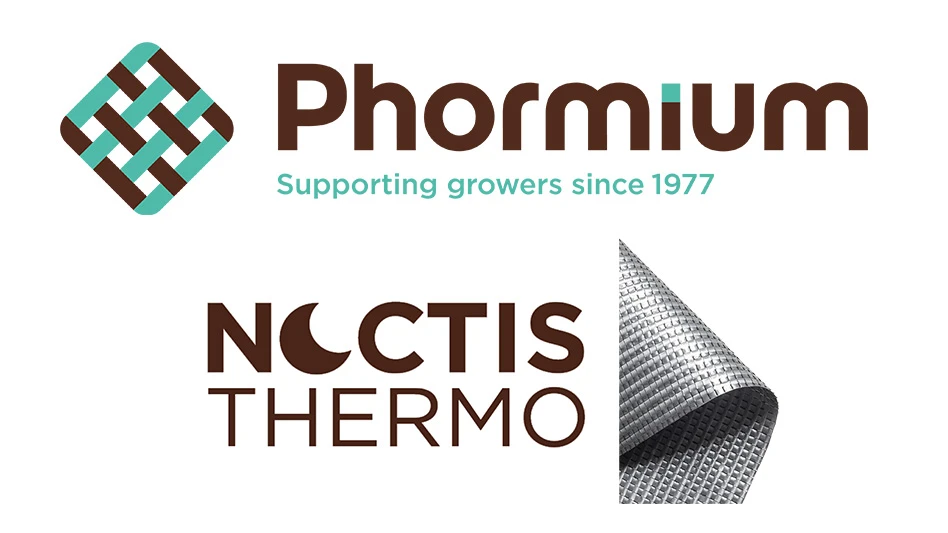
Eric Rohloff is quick to say that he’s not a head grower, even though his responsibilities at Esman Greenhouse sound like the duties you’d expect in that position. Instead, Rohloff prefers the title of “Head Plant Manipulator,” because his job entails more than just growing plants for the wholesale operation. Overseeing everything from greenhouse structures to environmental controls to his small team of assistant growers, Rohloff manipulates the conditions to produce pristine crops of wave petunias and other premium annuals for garden centers.
“It’s never been my job to just grow plants,” says Rohloff, who joined Esman in 2000. “It’s taking care of the whole place — not just the plants, but everything around them.”
In fact, this diversity drew Rohloff to the industry in 1983. He started working for a greenhouse part-time while attending college to learn tool and die making and, later, mechanical engineering. Before he finished his engineering degree, he fell in love with the greenhouse business and turned it into a full-time career. He sees plenty of similarities between his mechanical mindset and his growing occupation, since he’s responsible for installing automated equipment, greenhouse structures, plumbing, heating and electrical systems.
“At a lot of places, the growers are just growing,” he says, “but if we come in on a Sunday morning and there’s no heat, it’s our job to fix it. So, I want all my people to know how to troubleshoot to make sure the crop is safe.”

Teaching growers to troubleshoot
Rohloff’s team consists of two assistant growers with little industry experience. To teach them how to troubleshoot plant issues, he walks the greenhouse with them weekly to observe not only what’s happening with the crops in their respective sections, but also what’s going on in the rest of the facility.
“I tell my growers to look for what’s different,” Rohloff says. “Sometimes plants let you know what they need, and sometimes they don’t tell you until it’s too late, but [you’ll know when] there’s something wrong. Try to figure out: Is it you? Is it your water? Is it your media? Is it the plants? Is it a virus or a bug issue?”
Rohloff asks a lot of questions to train his growers to observe plant cues and conditions, and to help them figure out which inputs need to be manipulated to keep plants healthy. However, he doesn’t expect them to have all the answers. He encourages growers to use Esman’s proprietary database that tracks every chemical and biological application for each crop, which provides a detailed picture of growing instructions, troubleshooting solutions, and mistakes to avoid.
The database allows growers to look up temperatures, growth regulation rates, watering levels and other applications from previous years. Rohloff also uses the data to calculate chemical usage, so he can save money by purchasing bulk orders in advance.
The database began as an Excel spreadsheet that Rohloff built into a mobile app called Pest Logbook around 2013. Now, he even offers it to other greenhouses through pestlogbook.com. “The app made it easy to retrieve data, because we have access to information on our mobile devices,” he says. “That’s a powerful tool for us to be able to see what we’ve done in the past, and that keeps us consistent.”



Automating manual tasks
Greenhouse automation is a key component of Rohloff’s plant manipulation tactics. Using his mechanical background, he installed hands-off boom irrigation, in-floor heating, and environmental controls at Esman Greenhouse.
“We have a lot of tools available to keep our environment consistent,” he says. For example, since the sun can be a rarity during winters in Kalamazoo, Michigan, grow lights help mitigate the environmental conditions that Rohloff can’t manipulate.
“Technology is a huge time-saver,” says Rohloff, 55. “It’s a blessing and it’s bad, too, because you’re always tied to it. Some people think you can’t get away, but it allows me to have peace of mind because I can make changes from my phone and not have to run up to the computer all the time.”
Owner Scott Esman is committed to investing in technologies to keep the greenhouse running as efficiently as possible. In 2016, Esman purchased the adjacent property when the neighboring greenhouse owner retired, and since then, Rohloff has been steadily updating the old facilities with more efficient systems and materials. Recent improvements include replacing lathe and plastic with aluminum and Lexan polycarbonate end walls, adding automatic roll-ups, and installing new sidewalks.
The extra space doesn’t just bolster Esman’s 10-acre production capacity — it also helps boost employee morale. “We made so many improvements last year, which not only helps our growers’ attitudes (by giving them better tools to do their job), but it helps the people pulling product also, because the sidewalks were too narrow before,” Rohloff says. “When you improve the efficiency, it makes everybody happy: The crop ends up better, and the people feel better.”

Explore the February 2021 Issue
Check out more from this issue and find your next story to read.
Latest from Greenhouse Management
- This month's Greenhouse Management magazine is about native plants and sustainability
- The HC Companies, Classic Home & Garden merge as Growscape
- Terra Nova releases new echinacea variety, 'Fringe Festival'
- Eason Horticultural Resources will now officially be known as EHR
- BioWorks receives EPA approval for new biological insecticide for thrips, aphids, whiteflies
- ScottsMiracle-Gro transfers cannabis subsidiary to focus on core lawn and garden business
- Should we start calling natives 'eco-beneficial plants'?
- Ellen Mackenbach-Lakeman appointed new CEO of Dümmen Orange





